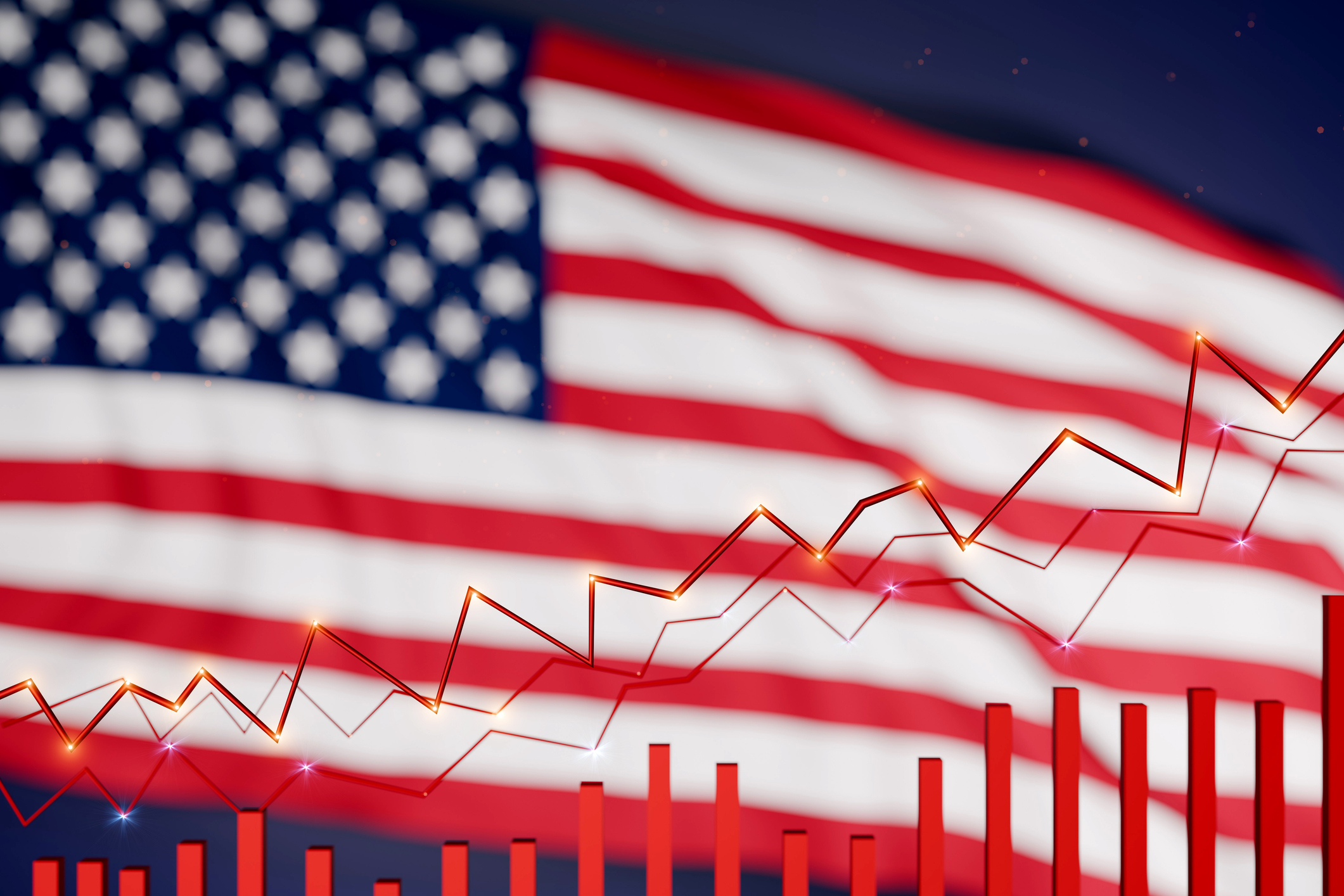Jim Mellon: the world is on the brink of three major revolutions
Jim Mellon has been giving MoneyWeek’s readers lucrative ideas ever since our very first issue. He tells Merryn Somerset Webb how he sees the next 20 years and what he likes the look of now.


Jim Mellon wrote the first ever Personal View column in this magazine (see page 36 for this week’s). He has been a friend of the magazine ever since. But if you read and acted on some of the things in that column, you may well consider him to be an extra-special friend of yours. One of the tips he offered was Align Technology. It has, he said, “a disruptive technology, albeit in a mundane sounding field… they will control a multibillion dollar market place and it will prove an excellent investment”. That field was invisible braces for teeth. The company listed a few weeks later and the shares are up by 2,500% since.
Jim also asked us all to look to Silicon Valley. California, he said, had become the “epicentre of the economic universe... home to intellectual property and technology production on a scale unequalled anywhere else”. We were in a new “golden age of invention and progress in life sciences, information and technology”. The dotcom bubble had just burst (this was November 2000). When the Nasdaq index got to 2,500, Jim suggested we buy. It fell to 1,100 (yikes!), but that bad short-term trade turned into a brilliant long-term one: US tech has had a tricky week, but the Nasdaq is still knocking around 11,160.
The 20 years since have not exactly been uneventful: we’ve lived through an extraordinary bond bull market (now entering year 35); long-term low inflation and low interest rates, and globalisation marked by the rise of China. So what next? For us at MoneyWeek, this year feels like an inflection point – one in which we see the beginnings of the new trends that will characterise the next 20 years.
MoneyWeek
Subscribe to MoneyWeek today and get your first six magazine issues absolutely FREE

Sign up to Money Morning
Don't miss the latest investment and personal finances news, market analysis, plus money-saving tips with our free twice-daily newsletter
Don't miss the latest investment and personal finances news, market analysis, plus money-saving tips with our free twice-daily newsletter
The end of ageing?
I start my 20-years-on chat with Jim, asking if he feels the same. He does. We are, he says, on the cusp of three major revolutions. The first is in longevity. The second is agrarian and the third environmental. These are the three areas sensible MoneyWeek readers will want to focus on over the next 20 years. We start with longevity. Jim and I have, of course, barely aged over the last 20 years and if Jim is right we could keep it that way. The diseases “that cause frailty are being addressed pretty rapidly”, he says. So much so that the one disease we are all most frightened of as we age – dementia – will soon be avoidable even for those genetically predisposed towards it.
“I think there’ll be prophylactic treatments available quite soon, which will stop you from getting the build-up of plaques and tau protein tangles” that bring it on. What’s the best way to buy into the longevity theme? Jim plans to bring his own longevity-focused biotech incubator firm Juvenescence to the market soon. But in the meantime he is interested in US pharma firm Regeneron Pharmaceuticals (Nasdaq: REGN), which is increasingly interested in ageing. However, it won’t be a big part of their profits; for pure exposure you need to watch out for new companies going public, or, if you have a lot of money to invest, try the Longevity Vision Fund, run by Sergey Young. The key point, however, is that it is still a very nascent field and hence pretty hard to invest in. Think of it as being at roughly the same stage as the internet was when you still had to dial in and there was barely anything bar Netscape you could buy to be part of its future growth. That’s changed a little over the last 20 years, I say. What’s going to happen to the tech firms that have made fortunes for so many since?
They are “not investable at the moment”, says Jim (particularly with a Biden win). They’re “fully valued” and under a lot of pressure from regulators for privacy reasons and because of the monopoly profits they make. They may remain intertwined in our lives indefinitely (who can imagine giving up Google?), but their dominance is not inevitable: during the pandemic Amazon has actually lost market share to Walmart and Best Buy in the US – shops where you can buy stuff and have it immediately rather than the next day! Of all the uninvestables Tesla looks to be near the top of Jim’s list. It is a manufacturing company in a very competitive environment (everyone makes good electric cars these days) valued like a huge software company. “Absolutely avoid.”
Get set for the roaring 20s
So what should we buy instead? Anything offering goods or services people will want post-pandemic. Given that “we’re not very far off either a vaccination or the pandemic burning out”, it is time to buy with an eye to the fact that the last big pandemic (1918-1920) was followed by the roaring 1920s. People will want to travel and go to the pub again – yet all the businesses that cater to those needs are valued as though they will go bust. Not all will. “My recommendation is IAG Group (LSE: IAG) in the UK; Delta Air Lines (NYSE: DAL) in the US (it’s by far the best US airline) and then in the UK you could buy any one of the pub companies. The one I’ve been buying is Marston’s (LSE: MARS)”.
All these stocks are highly geared to recovery – and if their rivals do go bust and they get to put their prices up into the recovery they’ll really thrive. What of the UK as a whole? It’s done horribly since the Brexit vote and a lot of confused foreign investors packed up and left. But even with the overlay of Covid-19 policy incompetence, I wonder if, deal or no deal, they might come back. After all, what investors always say is that it is uncertainty they fear the most. Jim is optimistic too. The FTSE 100 (which derives some 75% of its revenues abroad, so is barely British anyway) is “incredibly cheap” relative to almost any other market. That moment a few weeks ago when Apple’s valuation was higher than the entire FTSE 100? It was reminiscent of the moment in the late 1980s when the Imperial Palace in Tokyo became worth more than all of California. It isn’t sustainable. Something will give.
Producing protein
We move on to Jim’s other real interest: the new agricultural revolution. “We have to do something about the food supply.” The growing Chinese and Indian middle classes want to eat as much protein as we do in the West. That means the production of protein has become increasingly intensive. There are animal cruelty issues here; moreover, “the environmental impact is disastrous”. After World War II there was no intensive farming in the US. Now 99% of all meat production in America is nastily intensive, and 75% of all plants grown are cultivated to feed animals we want to eat, not to feed us directly.
The good news is that plant-based products are improving. An Impossible Burger is much better than the vegetarian food of a decade ago. But we are also getting better at growing real protein in laboratories. Very soon we’ll see these products widely dispersed. To see how fast this can happen, look at the alternative milk market (almond and oat milk, for example). In 2010 they had 0.5% of the US market. Now they have 20% and two of America’s biggest conventional milk producers are bankrupt. More alternative milks are in the offing; witness the recent fundraisings from California’s vegan dairy start-up Perfect Day and NotCo, a Chile-based food tech group.
Reaching “Griddle Parity”
It won’t be very long before alternatives to dairy comprise 50% of the US market. It will be a similar story with cheese, then seafood and then meat. Think about this in terms of “Griddle Parity”. Everyone knows about grid parity – when the price of electricity created by renewables comes down below the price created by fossil fuels or conventional methods. “Griddle Parity is the same for food, for meats. And we’re within about two years of Griddle Parity for plant-based meats and about five years for laboratory-grown meat. This will constitute an enormous revolution and release a lot of land” for non-agricultural purposes as well. Somewhere perhaps for all the wind turbines that will be built in the many post-pandemic green deals we are promised? Perhaps, says Jim (though offshore wind is a better bet). But the thing to look at in this sector is battery technology. There is no point in making all this energy if you can’t store it.
The other thing to watch is hydrogen. “I have a sneaking feeling that hydrogen might just displace all this mania for electric vehicles. And especially for trucks and heavy transportation. Hydrogen is much cleaner in every way than electric-powered transportation.” That’s because the electricity requires huge quantities of minerals and energy to produce it in the first place.
There’s a lot to be going on with here (Jim is, as he says, “tremendously optimistic” for the next 20 years), but he wants to chuck in one last tip – and a rather unexpected one. It is Lloyds Banking Group (LSE: LLOY). It is dismally managed, but dominant in UK retail banking, valued at “a fraction of its book value” and very unlikely to go bust. It also has a huge dividend yield. It might not quite go up 2,500% in 20 years, but when confidence returns to the UK (soon) it will do extremely well. “I would buy Lloyds by the bucketful at the moment.” It is convincing stuff. We agree to meet again in 2040 to see how it went, hopefully just as young, a bit richer and in person.
• Jim Mellon is the chairman of Burnbrae Group, and the author (with Al Chalabi) of several books, including Juvenescence: Investing in the Age of Longevity. Watch Merryn’s full interview with Jim here.
Get the latest financial news, insights and expert analysis from our award-winning MoneyWeek team, to help you understand what really matters when it comes to your finances.
Merryn Somerset Webb started her career in Tokyo at public broadcaster NHK before becoming a Japanese equity broker at what was then Warburgs. She went on to work at SBC and UBS without moving from her desk in Kamiyacho (it was the age of mergers).
After five years in Japan she returned to work in the UK at Paribas. This soon became BNP Paribas. Again, no desk move was required. On leaving the City, Merryn helped The Week magazine with its City pages before becoming the launch editor of MoneyWeek in 2000 and taking on columns first in the Sunday Times and then in 2009 in the Financial Times
Twenty years on, MoneyWeek is the best-selling financial magazine in the UK. Merryn was its Editor in Chief until 2022. She is now a senior columnist at Bloomberg and host of the Merryn Talks Money podcast - but still writes for Moneyweek monthly.
Merryn is also is a non executive director of two investment trusts – BlackRock Throgmorton, and the Murray Income Investment Trust.
-
 Boost for over 100,000 families on Child Benefit as new HMRC payment system rolled out
Boost for over 100,000 families on Child Benefit as new HMRC payment system rolled outThousands of households will no longer have to pay the dreaded High Income Child Benefit Charge through self-assessment
-
 Are you being haunted by the ghost of Christmas past? How festive cutbacks could boost your long-term wealth
Are you being haunted by the ghost of Christmas past? How festive cutbacks could boost your long-term wealthThe average family spends around £1,000 over the Christmas season. Here’s how much you could have gained if you had invested some of the money instead.
-
 Stock markets have a mountain to climb: opt for resilience, growth and value
Stock markets have a mountain to climb: opt for resilience, growth and valueOpinion Julian Wheeler, partner and US equity specialist, Shard Capital, highlights three US stocks where he would put his money
-
 The steady rise of stablecoins
The steady rise of stablecoinsInnovations in cryptocurrency have created stablecoins, a new form of money. Trump is an enthusiastic supporter, but its benefits are not yet clear
-
 SRT Marine Systems: A leader in marine technology
SRT Marine Systems: A leader in marine technologySRT Marine Systems is thriving and has a bulging order book, says Dr Michael Tubbs
-
 Goodwin: A superlative British manufacturer to buy now
Goodwin: A superlative British manufacturer to buy nowVeteran engineering group Goodwin has created a new profit engine. But following its tremendous run, can investors still afford the shares?
-
 A change in leadership: Is US stock market exceptionalism over?
A change in leadership: Is US stock market exceptionalism over?US stocks trailed the rest of the world in 2025. Is this a sign that a long-overdue shift is underway?
-
 A reckoning is coming for unnecessary investment trusts
A reckoning is coming for unnecessary investment trustsInvestment trusts that don’t use their structural advantages will find it increasingly hard to survive, says Rupert Hargreaves
-
 Metals and AI power emerging markets
Metals and AI power emerging marketsThis year’s big emerging market winners have tended to offer exposure to one of 2025’s two winning trends – AI-focused tech and the global metals rally
-
 8 of the best houses for sale with beautiful fireplaces
8 of the best houses for sale with beautiful fireplacesThe best houses for sale with beautiful fireplaces – from a 15th-century cottage in Kent to a 17th-century palazzo in Oxfordshire
